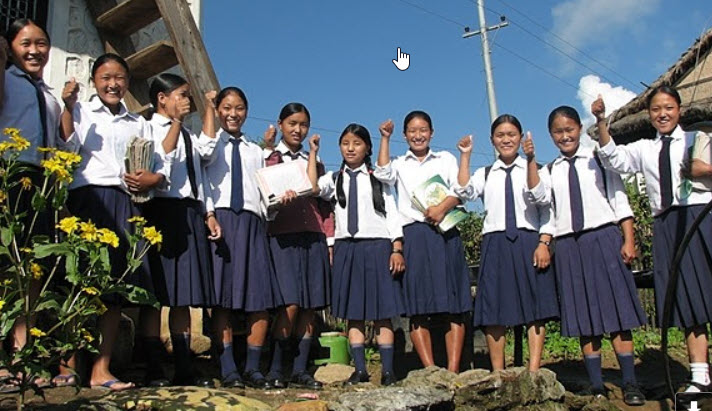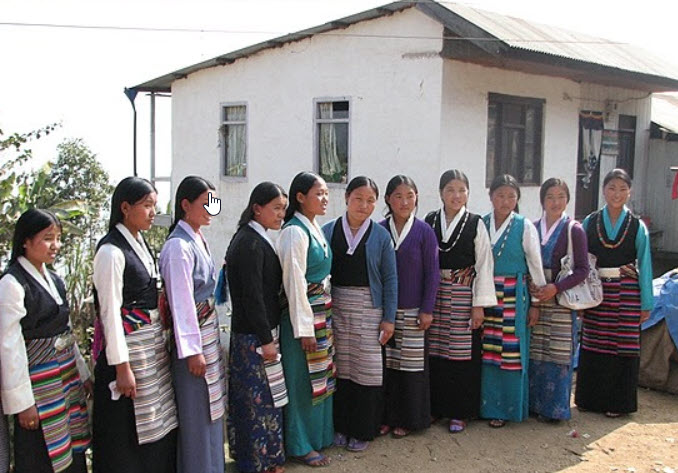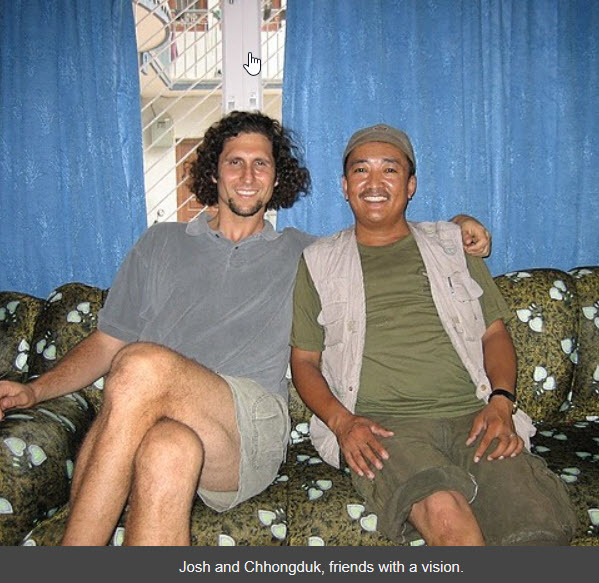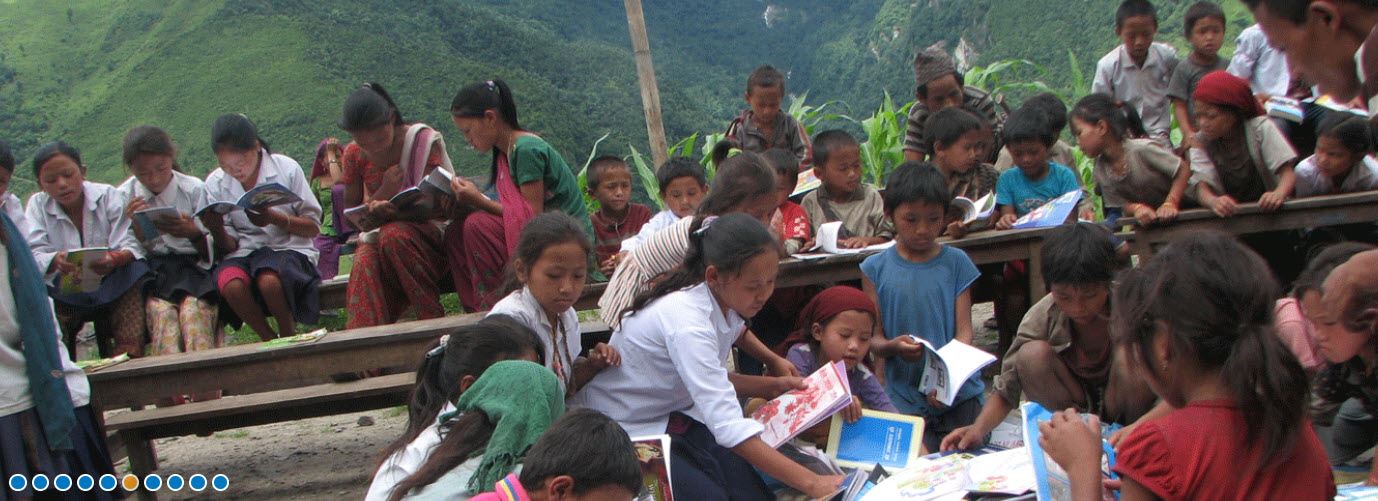history of the Himalayan Education Center
In 1995 and 1996 Josh Brody was teaching at a school in Khandbari Bazaar, the district headquarters of Sankhuwasava in eastern Nepal. At the time, Khandbari was about a two day walk from the nearest road with somewhat limited infrastructure for necessities such as water and electricity. In another five day walk up the Arun River Valley, past the sacred confluence of the Arun and Barun Rivers, past Mount Makalu, the fifth tallest mountain in the world, one reaches Nepal’s border with the Tibet Autonomous Region of China. Around the time Josh arrived in Khandbari, the Makalu Barun National Park and Conservation area was being established. This was a significant project for the region with relatively large amounts of funding from a variety of Many people living in remote villages near the border, would make the long walk to the district headquarters where he was teaching to buy and sell goods and to conduct any official business they had with the state of Nepal. Over time, Josh became close with a teacher, Chhongduk Bhotia, from one of those villages, who expressed to Josh his frustration with the implementation of the Makalu Barun project. Chhongduk felt that while there was rhetoric around local participation, sufficient efforts were not being made to authentically include local people in planning or implementation of the national park’s programs. Chhongduk decided to seek funding from the national park to conduct training and workshops for local people to help them better understand ways they could engage with the national park staff and officials. Despite his efforts, Chhongduk's requests for funding were ultimately denied. In his conversations with Chhongduk, it became clear to Josh that comprehensive education reform efforts that focused on making education more relevant to the language, livelihoods, and cultures of people living in the remote mountainous areas could bring some benefit to communities that had been historically marginalized in With funding from a fellowship for social entrepreneurs from the Echoing Green Foundation, Josh and Chhongduk began with a focus on 1) preparing girls to become teachers and community leaders in their own villages, 2) development of materials that were relevant to language, livelihood and culture to be used in schools, and out of schools for adults and children who were not able to attend formal schooling, and 3) capacity building for local school management committees so that there could be greater accountability from schools to local communities. So things stood until good fortune arrived on the scene. Rand Runco and Mark LaMont met Josh Brody in Nepal in about 2006. It was a completely chance meeting, as they were staying at the same hotel. Josh explained the program for young women that he and Chhongduk had initiated. Further conversations led to Ten Friends’ involvement with this organization, now called the HEC, which is an amazing educational opportunity for young women in a place that Rand and Mark knew well - a fairly isolated area in the Makalu region of Nepal. Since then, Ten Friends’ donors, and other organizations from Europe, have helped Sunita Gurung and the girls of the HEC build a more permanent presence in their region of Nepal, including an Earthship home and several other structures. They also have a large terraced garden and grow much of their own food while they attend the local university. There, they have the means to reach their true potential and accomplish dreams that were otherwise impossible. Many girls have have reached their educational goals, and many more will, as Sunita continues to provide incredible leadership and initiative that guides the future of the HEC. With the passage of time Josh has seen the seed he helped to plant grow into today's HEC. In his own words, Josh noted: "Now, more than twenty years later, there are few things that provide me with more satisfaction than knowing that the Himalayan Education Center, led by one of its very first students, Sunita Gurung, is still there serving students and communities in remote areas of eastern Nepal. I am deeply grateful to Ten Friends for seeing the value in and supporting this work."
|
You can help by donating to the Himalayan Education Center
Help the Future Teachers. A donation of $1,000 will support one of these girls for a full year, including room, board, tuition, books, fees, etc. If you would like to support the Himalayan Education Center in this way, please make a donation. A convenient way to do this would be a recurring monthly donation of $84. If you would like to donate another amount, your donation would be appreciated. Please select the Himalayan Education Center Donation Selection when making your donation. Thank you!

 foreign donors. The hope for the park was to have local people actively involved in the conservation of natural resources, taking advantage of already existing indigenous systems that promote sustainability.
foreign donors. The hope for the park was to have local people actively involved in the conservation of natural resources, taking advantage of already existing indigenous systems that promote sustainability. Nepali society. These communities had been living in relative isolation, but with the establishment of the national park and also the possibility of new state led projects such as roads and hydro-electric facilities, Josh agreed with Chhongduk that relevant and holistic education reform might support communities to have greater say in the ways their communities would inevitably be impacted.
Nepali society. These communities had been living in relative isolation, but with the establishment of the national park and also the possibility of new state led projects such as roads and hydro-electric facilities, Josh agreed with Chhongduk that relevant and holistic education reform might support communities to have greater say in the ways their communities would inevitably be impacted.